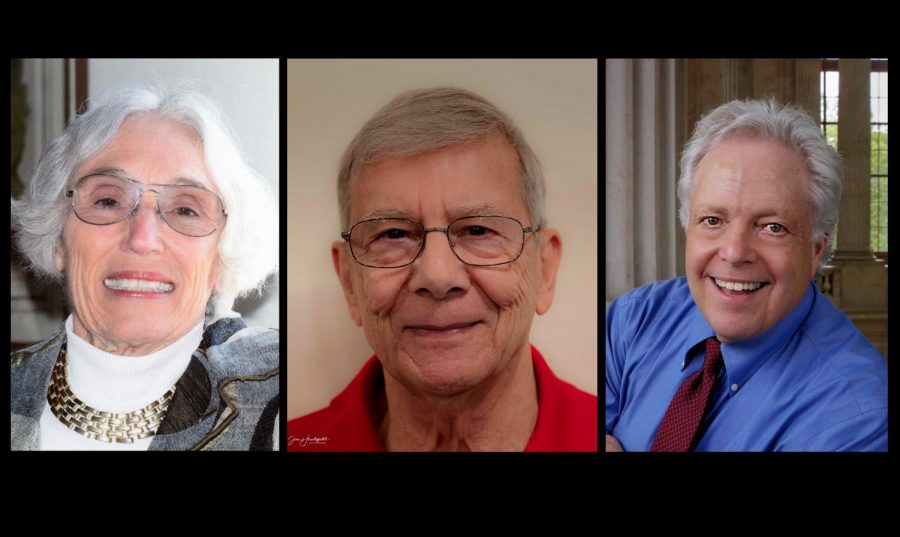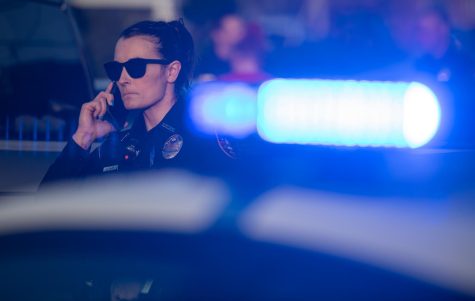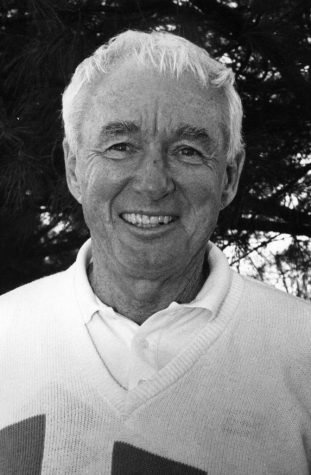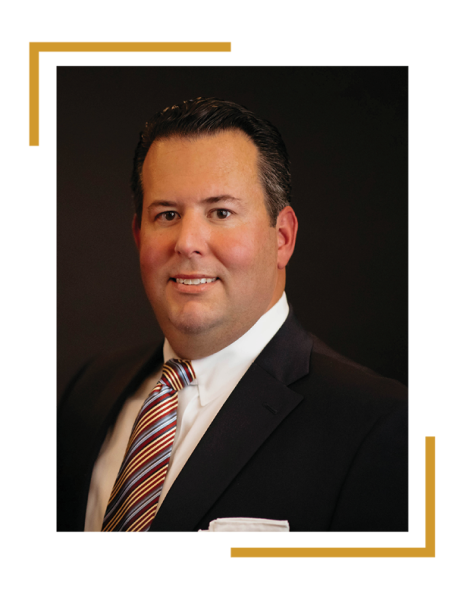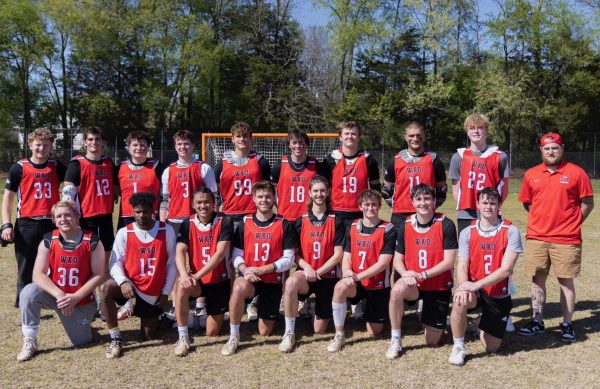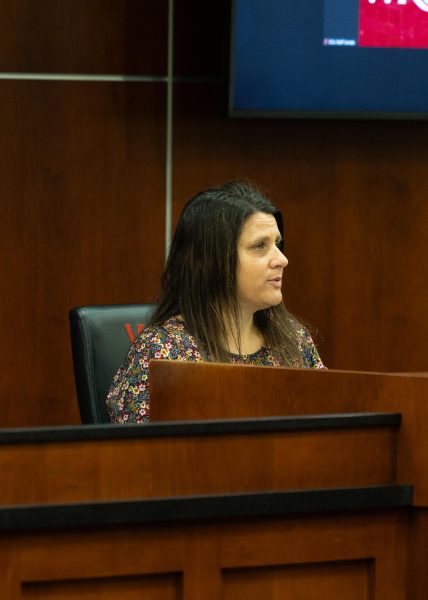Three nationally recognized alumni to be honored at homecoming
July 29, 2019
A Pulitzer Prize-winning photojournalist, a widely published math professor, and a former Centers for Disease Control and Prevention officer will be inducted into WKU’s Hall of Distinguished Alumni at homecoming on October 18.
J. Scott Applewhite is a senior photojournalist with the Associated Press in Washington, D.C., where he has covered a variety of things from the White House to Congress. In 1993, his photos from the 1992 presidential campaign helped the AP win a Pulitzer Prize in Feature Photography. In 1999, his photos from the Clinton impeachment crisis help the AP earned a Pulitzer Prize in Feature Photography.
Applewhite, who was raised in Elizabethtown and Louisville, started his education at the University of Louisville, but in the middle of his sophomore year, he transferred to WKU where he started by studying science. One day, Applewhite’s friend George Wedding, a photographer for the College Heights Herald, brought him into the newsroom where everyone was busy at work. He had just started getting into photography.
“I was so engaged and inspired by these students who were just really involved in doing something they really wanted to do,” Applewhite said.
He started off with smaller assignments for the Herald like taking headshots, and he was allowed to submit feature photos whenever he wanted. Former journalism professors like Bob Adams, David B. Whitaker and David Sutherland helped Applewhite learn the ropes of photography and journalism.
“I was able to thrive on the student newspaper and the yearbook staff,” Applewhite said.
During his time at WKU, Applewhite got an internship at the Courier Journal in Louisville in the midst of the Vietnam War. Applewhite was waiting to see if his draft number would be picked, so he started working in the journalism field. From Louisville, he worked in Henderson, Ky., and West Palm Beach, Fla. By late 1980, Applewhite was working in Washington, D.C. for the AP.
“I got a job, and I kept working,” Applewhite said. His draft number never came up.
Applewhite has taken photos of presidents dating as far back as Ronald Reagan to as recent as Donald Trump. He covered former President Reagan’s trip to the Berlin wall. Applewhite has covered conflict in Somalia, Haiti, and the Balkans. Some of his more recent photography has been focused on covering Congress with its increased differences and diversity over the years.
On July 24, Applewhite shot photos of Special Counsel Robert Mueller’s testimony for the AP.
Shirley Gray is a math professor at California State University, Los Angeles. She and her research team have been published for their work on the Method of Archimedes. Her work is included in the National Curve Bank, which features a wide variety of mathematical curves with interactive online features. Gray led the effort to have the Vatican and the Itialian government recognize Maria Gaetana Agnesi, the first woman to publish a book on mathematics.
During her time at WKU, Gray was involved in the band. She played “Stand Up and Cheer” with the marching band, and more traditional music like “Egmont Overture” by Ludwig Van Beethoven with the concert band.
“For the first time in my life, I was really playing with a group of people who were real musicians, and it really made a big impression on me,” Gray said.
When it came time to decide what to do with her life, Gray had to choose between mathematics and music. She didn’t think she would be able to find a band or a choir just anywhere.
“But I knew right off the bat: there are never enough math teachers,” Gray said.
Gray grew up around math, and there were a few people in her family who were teachers. Her father and grandfather owned a milling company in Beaver Dam where the major product was Eureka flour. Eureka is a word deeply associated with Archimedes. From there, Gray read more and more on math.
“In the back of my calculus book that I read and looked at on the second floor of Cherry Hall was a collection of curves, and the curve there that had caught my attention was something called the Witch of Agnesi,” Gray said.
Gray worked to become an expert on the Witch of Agnesi, which was published in the book by Maria Gateana Agnesi on calculus. By 2000, Gray started working on the Vatican and the Itialian government to get a stamp produced in Agnesi’s honor. Although both groups recognized the importance of Agnesi’s, they receive so many requests for stamps that they need a significant year in the person’s life to issue the stamp.
Agnesi died in 1799, and Gray felt confident she wouldn’t around for 2099. Agnesi’s book was published in 1748, and Gray wasn’t sure she would make it to 2048. However, Agnesi was born in 1718, and Gray thought she would live to see 2018. She was right. In 2018, the stamp was issued for the 300th anniversary of Agnesi’s birth.
“It was a real kick, it really was, but it all started in the second floor of Cherry Hall when I looked in the back of the book and there was her curve, her famous curve,” Gray said.
Dixie E. Snider greatly influenced public health during his time in many positions in the CDC. He worked in the Division of Tuberculosis Control for several years, including when AIDS came to the forefront. He also worked on the vaccination and immunization policies. Snider worked with the Food and Drug Administration on the folic acid fortification of cereal grain.
When Snider started at WKU, he wasn’t entirely certain what he was going to do with his life. He thought he might end up in education. He had a bit of a rough time his freshman year because he was involved in too many extracurriculars, but by his sophomore year his plans started to form. His time at WKU prepared for medical school at U of L. He gained a variety of medical training afterward.
Snider began at the CDC in 1973.
“I didn’t expect to work at the CDC,” Snider said. “I thought I would be involved in academic medicine and see patients regularly but it turned out that I really like the idea of public health.”
Snider was involved in so many things during his time at the CDC: tuberculosis, immunization, vaccination, and work with the FDA. One of the most important things he feels he did was work on the apology for the Tuskegee Syphilis Study. He spent three years helping draft the apology that Bill Clinton eventually gave to the nation for the study. Snider remembered seeing the appreciation of those who objected to the study when the apology happened.
“I was delighted to be in the audience in the White House when that occurred,” Snider said.
Snider feels like he’s been provided opportunities by God, and he says that even when something is hard, it still must be done.
“Take up those challenges when opportunities appear,” Snider said. “Don’t let them swoop by because you’ll not come away at the end of your life being happy with the way it went if you regret that you didn’t take advantage of opportunities.”
The luncheon and induction will last from 11 a.m. to 1 p.m. at the Sloan Convention Center in Bowling Green. Tickets will be available for sale online at the beginning of the semester.
News reporter Lily Burris can be reached at 270-745-6011 and [email protected]. Follow her on Twitter at @lily_burris.

